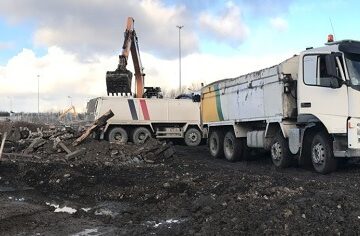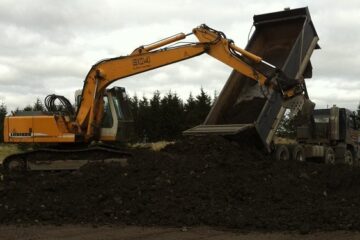It is a universal truth that your personal circumstances will influence how you view the world. This can be any aspect of life your age, gender, ethnic and religious background, where you live or the job you do. These factors and many more will inform on the reasons for you having a very different view on events than the person sitting next to you. It is also inevitable that often the issues which get people most fired up relate to money because rightly or wrongly money is often the prime concern when taking decisions, particularly in business.
Which is why Landfill Tax (LFT) is such a contentious issue within the building and environmental industries.
To provide a bit of background LFT, as the name suggests, is a tax levied by the UK government on material which goes into landfill. Standard rate of LFT will be £102.10 per tonne (as of April 2023) which goes straight to the taxman and is put on top of whatever haulage and gate fees you’re paying to get the material to the disposal site and leave it there. As it’s not uncommon for disposal of soil on a single development site to run to thousands of tonnes, this very quickly becomes a major cost for developers.
The problem is that the landfill tax legislation and in fact the whole regulatory framework around waste disposal is ill suited to soil disposal which is the medium that we in the contaminated land industry frequently deal with. By its nature soil is often heterogeneous and no two development sites are the same. So, unlike many waste generating processes, that the legislation was really written for, which produce the same waste day in and day out the off-site disposal of soil/contaminated soil must be assessed and classified on a site by site basis. Determining the correct classification for soil is a complex process which I won’t go into here but is covered in the eBook below. What further confuses matters is that the classification is actually a separate but connected process to determination of the correct tax. Mis-classification of soil either accidentally or deliberately can lead to the incorrect underpayment of LFT, which opens you as the client to future liability.
Put simply because the legislation relating to LFT is poorly worded there exists a degree of uncertainty about what tax should be applied. There are soils which everyone agrees must have tax levied against them and there are soils which clearly meet the criteria for lower rate tax at £3.25 per tonne (as of April 2023) or disposal via one of the tax exempt routes by treatment and/or re-use. Then there are those soils which some parties argue should have standard rate tax applied and other people will argue just as strongly that they should not.
Which leads me back to my opening point. As remediation contractors, first and foremost we will always look to offer our clients the most cost effective solution which meets their requirements. And as environmental professionals we favour the use of on-site treatment or disposal routes such as treatment centres which avoid the use of landfill capacity and mean that landfill tax isn’t levied at all. We are therefore in favour of applying the rules for landfill tax accurately because it protects the clients’ liability and motivates our clients or potential clients to consider routes other than landfill. Routes which coincidentally fit with the wider stated aim of the government’s national waste policies of reducing the volume of material being sent to landfill. But if landfill tax is taken out of the equation these options can be more expensive and are often more involved in terms of time on site or they just lack (or are least perceived to lack) the certainty of outcome which off-site disposal offers.
Consequently those who favour the use of landfill, either because of a vested interest or because they are unaware of the alternatives, will often choose to interpret the information in a way which allows them to dispose of soils to landfill and avoid paying standard rate of LFT. While we may disagree with these actions the reason they take place is because the legislation is so poorly worded. If there’s a line in the sand then it’s easy to know where you stand and ensure that you are compliant with the legislation. At the moment that line is pretty fuzzy.
What the industry really needs is clear concise guidance, then it wouldn’t matter what your point of view is because everyone would be looking at the same thing and seeing it the same way.
Happy to help with your waste soils – why not give us a call – 0800 0209 307
2022
Waste soil classification and disposal options
Classifying waste soils for disposal without any prior knowledge can be difficult and uncomfortable at times, especially when it can be very costly if you incorrectly classify the material. This eBook will help you understand the whats, the whys and the hows of waste soil classification in the simplest terms.







Leave a Reply